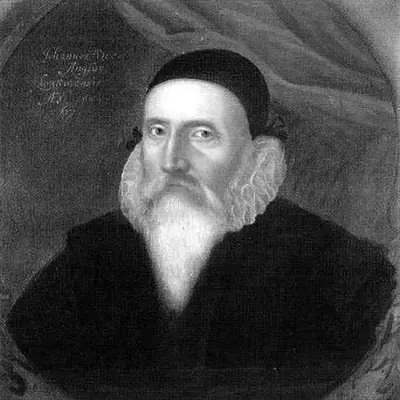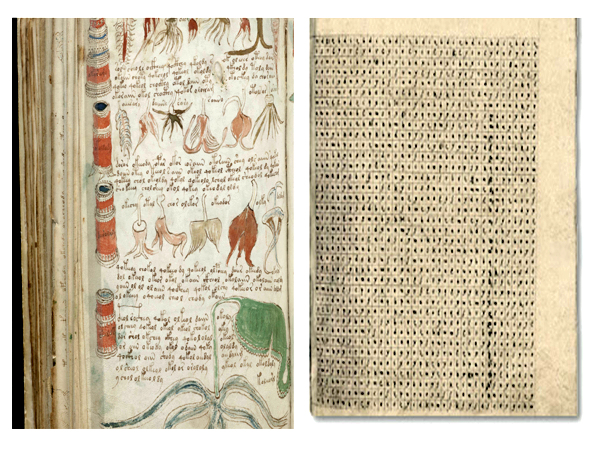The world is full of ancient mysteries, but few are as captivating as The Book of Soyga. This 16th-century manuscript, shrouded in secrecy and mysticism, has long fascinated scholars, occultists, and conspiracy theorists. Much like the Voynich Manuscript, the Book of Soyga has resisted complete understanding. Its strange language, cryptic content, and connection to famed mathematician and occultist John Dee have made it one of history’s most enigmatic texts.
But what is The Book of Soyga, and why has it captured the imagination of so many? This article will explore the history, mystery, and theories surrounding this cryptic text, delving into its possible meanings and the attempts to decode it.
The Origins of The Book of Soyga
Also known as Aldaraia, The Book of Soyga was discovered in the mid-16th century and is attributed to an unknown author. It was first brought into the spotlight by John Dee, an advisor to Queen Elizabeth I, who was deeply involved in both science and the occult. Dee, along with his associate Edward Kelley, famously attempted to communicate with angels using mystical techniques, and The Book of Soyga was an integral part of his quest for hidden knowledge.
After Dee’s death in 1608, the Book of Soyga disappeared for centuries, only to resurface in the 1990s when two copies were discovered in the British Library and Oxford’s Bodleian Library. Despite this rediscovery, much about the book remains a mystery. Written in Latin and filled with obscure diagrams, strange tables of letters, and cryptic incantations, its true purpose is still debated.
The Content of The Book of Soyga
The Book of Soyga is a complex and mysterious text, filled with occult knowledge that defies simple interpretation. The manuscript contains several sections, each with its own unique focus:
- Magical Rituals and Incantations: Much of the text is devoted to detailed instructions for performing magical rituals. These rituals include invocations of angels and demons, which Dee believed could grant the practitioner access to divine knowledge.
- Astrological Charts and Diagrams: Another significant part of the book is dedicated to astrology. Charts and diagrams related to celestial bodies and their influence on earthly matters appear throughout the manuscript. Dee was a known believer in astrology and considered it essential for understanding the workings of the universe.
- Tables of Letters: Perhaps the most perplexing aspect of the Book of Soyga is the series of tables that appear in the latter half of the manuscript. These tables consist of 36 rows and 36 columns, filled with seemingly random letters. Dee believed these tables held the key to unlocking hidden knowledge, though he was never able to decode them.
- Encrypted Text: While most of the book is written in Latin, certain sections are encrypted, adding to the mystery. These encrypted passages have stumped scholars and cryptographers alike, and no one has definitively translated them.
- Herbal Remedies and Recipes: Like many occult texts of its time, The Book of Soyga includes references to herbal remedies and alchemical recipes, blending science with mysticism in a way that was typical of Renaissance thought.

John Dee and the Search for Lost Knowledge
John Dee’s fascination with The Book of Soyga stemmed from his belief that it contained sacred knowledge passed down from the angels themselves. Dee was an ardent believer in the idea that humanity had once possessed divine wisdom but had lost it over time. He saw his life’s work as a quest to recover that lost knowledge, and The Book of Soyga was a critical part of that mission.
Dee’s association with the book led to many strange and esoteric practices. He and Edward Kelley conducted séances and claimed to receive instructions from angels about how to unlock the secrets of the universe. Dee believed that the tables of letters in The Book of Soyga held divine secrets, but despite his efforts, he was never able to fully decode them.
The connection between Dee and the book has led many to speculate about its true nature. Some believe it is an occult grimoire, filled with powerful rituals and invocations. Others think it may be a mathematical or astronomical text, designed to encode complex information about the universe. Still, others suggest it is a work of fiction, designed to intrigue and mystify.
Theories and Interpretations of The Book of Soyga
Over the centuries, many theories have emerged regarding the purpose and meaning of The Book of Soyga. While no consensus has been reached, several intriguing ideas have gained traction:
The Angelic Communication Theory
One of the most popular theories is that The Book of Soyga was intended as a guide for communicating with angels. Dee and Kelley’s séances often involved complex rituals and the use of special symbols, many of which are found in the manuscript. According to this theory, the tables of letters are a kind of code that, when deciphered, would allow the practitioner to contact higher beings and gain access to their wisdom.
The Alchemical Text Theory
Another theory posits that The Book of Soyga is an alchemical text, filled with hidden formulas and recipes for creating elixirs, potions, and possibly even the philosopher’s stone. Alchemy was a significant part of Renaissance occultism, and many texts from the period contain references to both scientific and magical knowledge. Some scholars believe the book’s encrypted passages may hold alchemical secrets, waiting to be unlocked by the right mind.
The Mathematical Cipher Theory
Some modern researchers have suggested that The Book of Soyga is a mathematical cipher, with the tables of letters encoding complex equations or astronomical data. Dee was a mathematician as well as an occultist, and it is possible that he saw the book as a tool for uncovering mathematical truths about the universe. This theory remains unproven, but the idea that the tables contain some form of hidden code continues to intrigue cryptographers.
The Hoax Theory
As with other mysterious texts, some skeptics believe that The Book of Soyga may simply be a hoax. According to this theory, the book was designed to appear mysterious and profound but ultimately contains nothing of value. Given the Renaissance fascination with the occult and the popularity of magical books, it is possible that the book was created to deceive or entertain wealthy patrons. However, this theory does little to explain Dee’s intense interest in the text or its connection to his broader occult practices.
Attempts at Deciphering The Book of Soyga
Despite the many theories surrounding the book, deciphering The Book of Soyga has proven to be a nearly impossible task. Numerous scholars, cryptographers, and occultists have tried their hand at unlocking its secrets, but none have succeeded in providing a definitive translation.
In 2006, Jim Reeds, a mathematician and cryptographer, published a paper analyzing the tables of letters found in the book. He concluded that they were likely generated by a complex algorithm, though he was unable to determine the exact method. Reeds’ work represents the most significant modern attempt to decode the manuscript, but many questions remain unanswered.
Other efforts to decode The Book of Soyga have focused on its astrological and alchemical content, though no clear conclusions have been reached. The book continues to resist interpretation, maintaining its place as one of history’s most enigmatic and unsolved mysteries.
Conclusion
The Book of Soyga remains a fascinating enigma, blending occultism, mysticism, and science in a way that has captivated scholars for centuries. Its connection to John Dee, its cryptic contents, and its strange tables of letters have led to countless theories, but no definitive answers. Whether it is a guide to communicating with angels, a hidden alchemical text, or simply a clever hoax, The Book of Soyga continues to inspire curiosity and intrigue.
Until its secrets are unlocked, it will remain one of the great unsolved puzzles of the Renaissance, a testament to humanity’s enduring fascination with the unknown.

